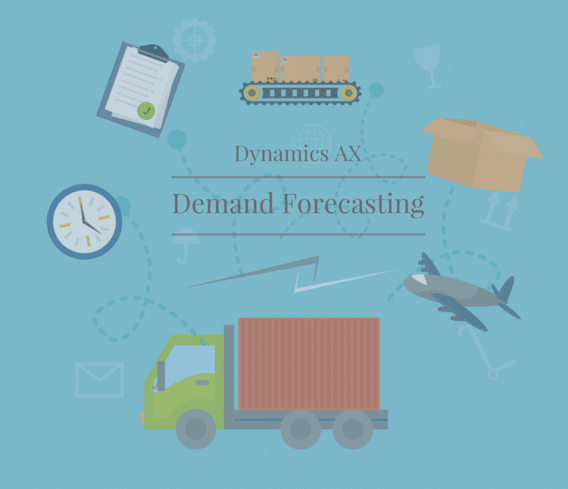Why You Should Use Demand Forecasting to Stay Competitive

One option would be to carry excess inventory so that you do not run out and are able to maintain the service levels and gain the reduction in lead time to your customers. While this may accomplish the objective, this could require a significant investment in carrying the additional inventory, not to mention the additional space needed in the warehouse.
A smarter option would be to plan ahead and project inventory levels with Demand Forecasting. Dynamics AX does have forecast capabilities that MRP can utilize, but you have to come up with a forecast, and compiling the data can be a fair amount of work. If you're a Power BI user, check out this article on Power BI Forecasting.
Demand Forecasting Within Dynamics AX
This brings us to the Demand Forecasting module within AX. It is a tool which will make forecast suggestions based on several factors, including history. Demand Forecasting will look at your history and based on the statistical factor you choose, suggest a forecast quantity which will satisfy the demand requirements when you need them. If you do not have much history in AX, you can use what you have, and extrapolate it out to cover your forecast horizon. For example, if you went live in October of 2015, you could use October through December as a basis for February to April planning. If you are a cyclical business, that would be another issue, but the point is, you can use any period of said length as the basis for planning the same length of time in the future. The longer AX is used, the more history there is, and the more options you have to create the basis for a baseline forecast.
AX 2012 R3 Demand Forecasting has tools which are already on your system, or included if purchasing AX, to allow you to do this. It uses Analysis Cubes to compile the data so you don’t have to. With the data it extracts from the cubes, Demand Forecasting creates a baseline forecast and pushes it into Excel. To create this baseline forecast, there are up to 12 different statistical models (dependent on SQL version and license model) to use which will look at your historical time period discussed above. You can use the default values of any model or just use history as the baseline. Within the different models, you can also change the parameters to get different scenarios if needed.
Once you have the baseline forecast into Excel, you can run many what-if scenarios and also massage the data to get the forecast to look as you expect it. I would recommend saving a copy of the forecast on the network just as a backup. It would also serve as an historical record of the forecast. Creating the Excel back up is nice to have in the event it needs to be reimported if a forecast is altered by accident or for future reference when doing forecasts down the road.
Once you have the forecast looking like you want to see it, you can publish the data back into the cubes. From there, Demand Forecasting has a tool to import it into the AX forecast which is part of the Master Planning module. It is very user friendly so no technical or IT resources are needed. This creates the demand from which MRP will run and suggest planned orders from the forecast dates. Once MRP regenerates, there are now planned purchase orders and also planned production orders to fulfill the demand from the forecasts.
So…Why should you use Demand Forecasting?
Let’s get back to the title of this article. Why should you use Demand Forecasting?
- Because it will save time in creating the forecasts you need to drive MRP.
- It will help to make your forecasts more accurate as it will use historical data and adjust it via the statistical model you choose.
- It will seamlessly import into the AX forecast module so MRP can use it.
- It will use the forecast horizon you tell it to use so you can go out as far as you need.
If you have AX and are a distribution or manufacturing company, I cannot think of one reason to not use this module. Happy Demand Forecasting!
Under the terms of this license, you are authorized to share and redistribute the content across various mediums, subject to adherence to the specified conditions: you must provide proper attribution to Stoneridge as the original creator in a manner that does not imply their endorsement of your use, the material is to be utilized solely for non-commercial purposes, and alterations, modifications, or derivative works based on the original material are strictly prohibited.
Responsibility rests with the licensee to ensure that their use of the material does not violate any other rights.
